Once you enter to the Models product you get immediately introduced to the Model Overview Menu, where all the models that are created appear. There it is listed all the necessary information to immediately attest what you are going to do next.
Once you enter to a single model, by default you are going to enter to the Overview section.
Since you are in this section, you probably already have knowledge on how to create a new model.
You might need to jump to the Model Definition Section to start or continue working on the model.
After you have set up a structure, meaning that we now have an output table from our model, we can view our result output table in the Data Section.
Let's now introduce the Data Section by all its elements:
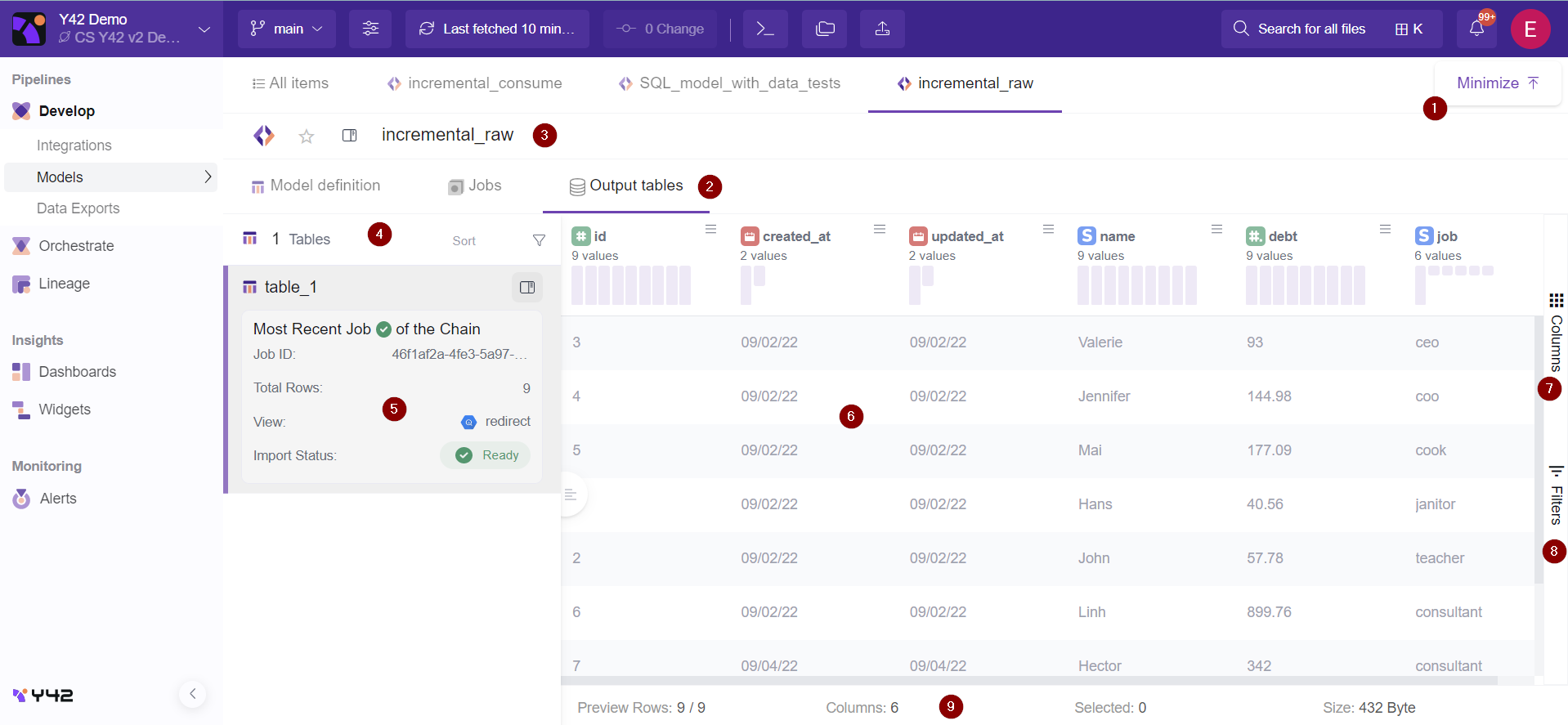
1- Expand / Minimize Button.
This button helps in making the board higher by hiding the model sections panel. Once you finish with the working board you might need to show the panel again so you jump between sections. Note: If the data section is not visible, you probably need to click the expand button.
2- Data Section.
In this section your data result set table/s will appear. This means that your output node/s have been committed at least 1 time, and now it is ready to be used as an integration for further actions.
3- Model information.
From this section you might as well change the model name, make it as favorite, or add/change a description, tags, add comments, view dependencies.

By clicking the open asset button you can view:

- Information about the model and the tables
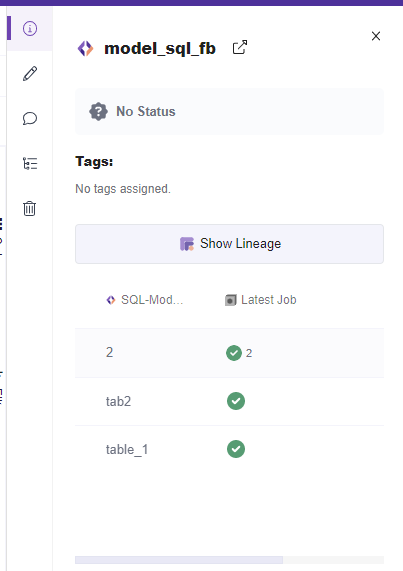
- Edit the metadata like Tags, Owners, Experts, or View metadata file history:
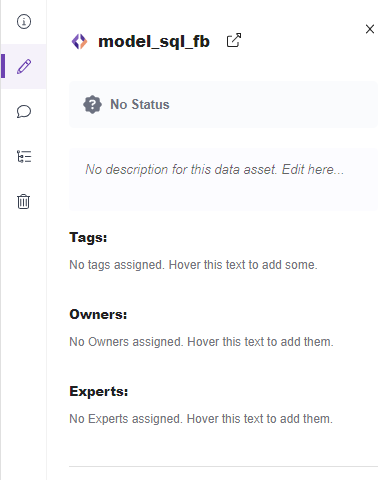
You might also see version changes by clicking the Metadata File history.
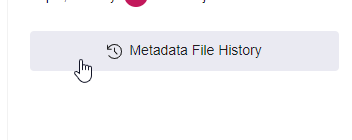
Here it is provided all the necessary information on the commits in history, changes, who changed it, what is changed.
You can revert the changes anytime as in any previous version!

- Add comments

- View upstream and downstream dependencies.
It shows the dependency logic before the actual sql model (Integrations or other model dependencies) and after the actual table (Other models, Orchestrations etc)
- Delete SQL model.
Deletes the actual SQL model.
4- Table Overview Section.
In this vertical section all the tables will appear. You need to click on a table to view it's data in a tabular form.
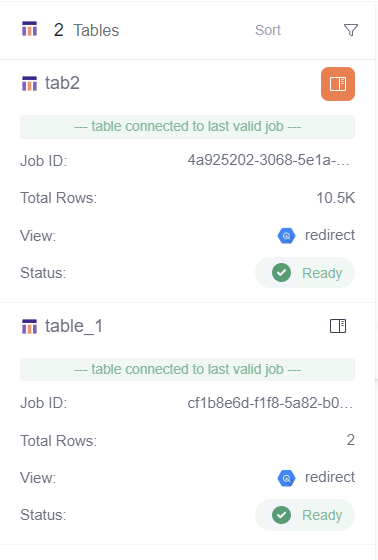
On the top of the Table section you can see the:
- total number of tables → Displays the total number of output tables you have committed at least once
- sort action→ With this action you can sort the tables by Name, Status, Created at,number of Rows

- filter action → Once clicked you can search for the table name you are interested in. The table that matches your filtering criteria will display on top.
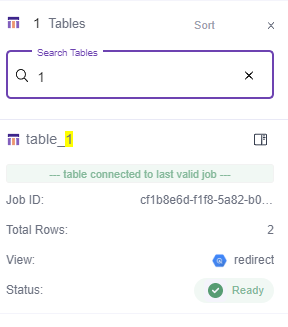
5- Single Table.
You need to click on a single table to view it's data in a tabular form (as displayed in counter 6).
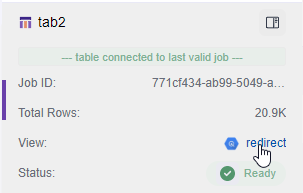
Each table will display the following information and actions:
- Table name
- Job Id
- Status. (Ready/Pending/Failed)
- Total rows. The total number of rows this single table has. Note: The number showed is rounded.
- Redirect to BigQuery. Once you click the link you will be brought to the BigQuery table.
- Open asset.
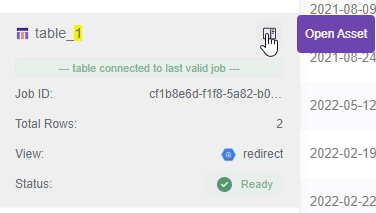
Open asset → For each table you have the possibility to :

a- View information about the table:
View the metadata like Tags, Owners, Experts, or View logs, request settings, job statuses and timeline.
By clicking see more button you can view all the condensed information in a popup:
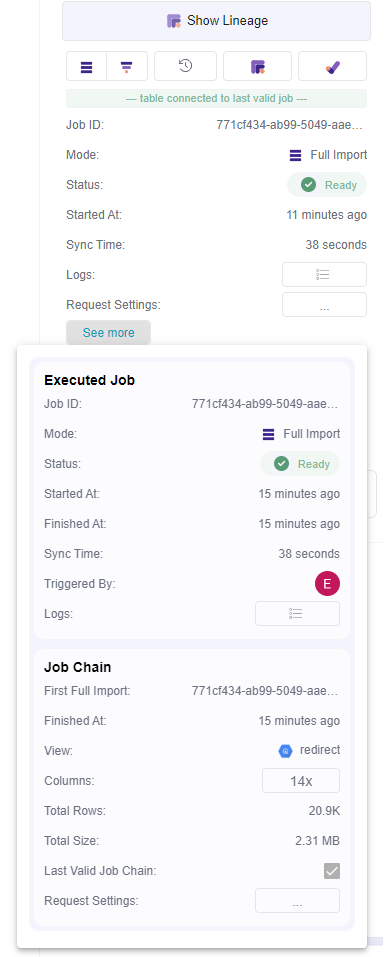
b- Show Lineage:
By clicking the "Show Lineage" button you can view the dependencies relation of the table in a tree like form.
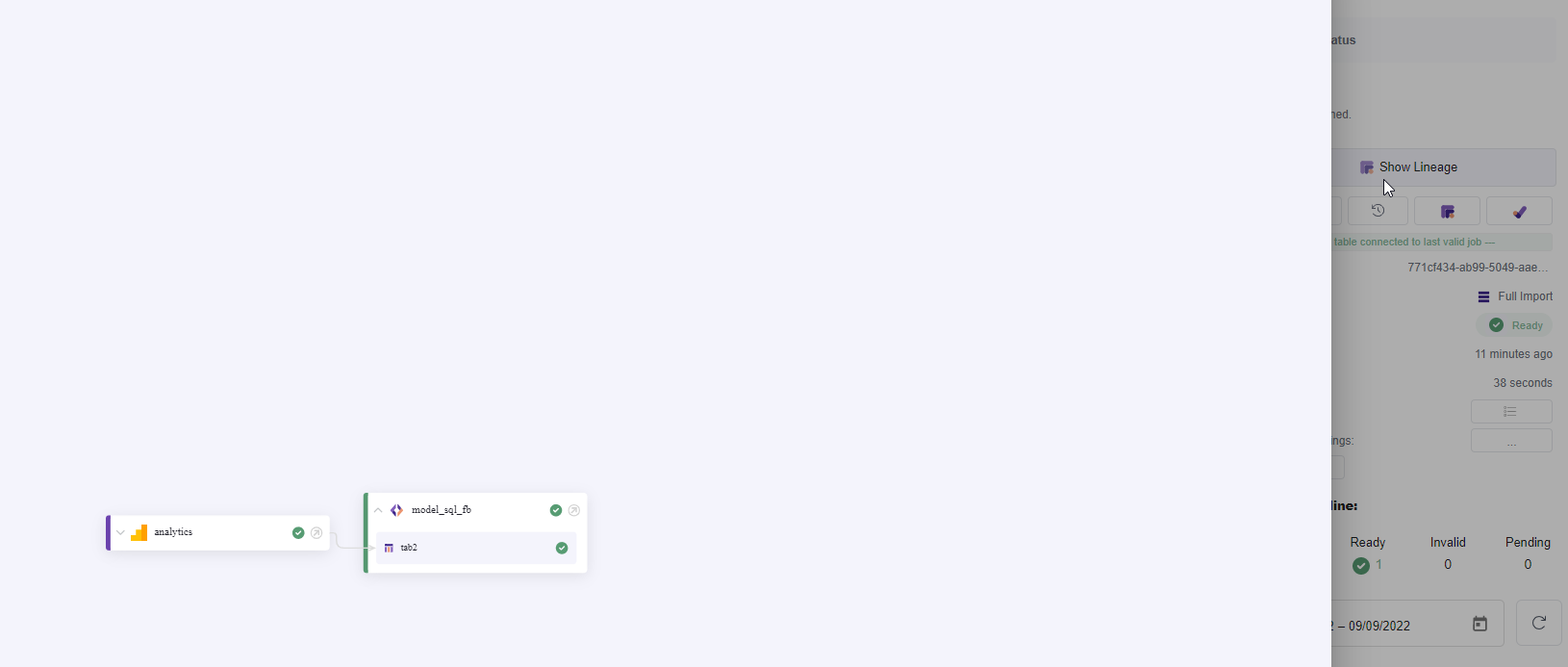
c- Trigger a Full or Incremental Job for the table
d- View History
e- Add data tests on this table

f- Edit the metadata like Tags, Owners, Experts, or View metadata file history:

You might also see version changes by clicking the Metadata File history.

Here it is provided all the necessary information on the commits in history, changes, who changed it, what is changed.
e- Add comments

g- View upstream and downstream dependencies.
It shows the dependency logic before the actual table (Integrations or other model dependencies) and after the actual table (Other models, Orchestrations etc)
h- Delete table.
Deletes the actual table.
6- Data board.
Once you click a single table, the data will appear in the right in a tabular form. This data should be the same as your last committed output of this table in the output node.
In this data set you might perform analytics right form here by right clicking anywhere inside the data board:
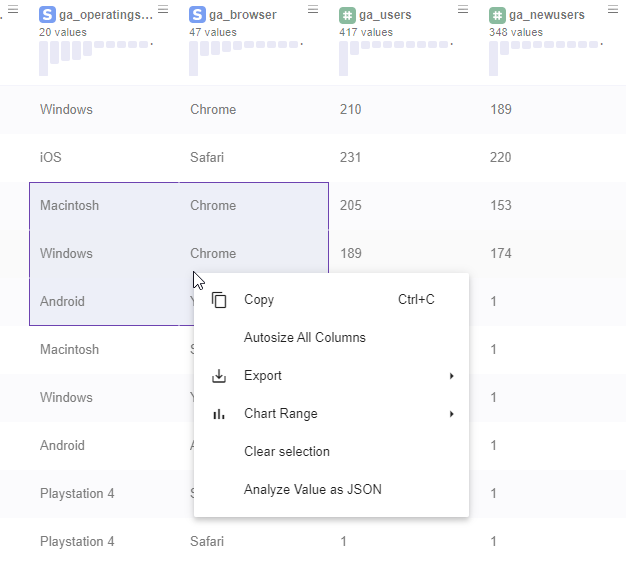
The following options now are available:
- Copy→ Copies the single cell text you right clicked into.
- Autosize all columns→ Expands the columns horizontally so the text inside cells is easily visible.
- Export in CSV or Excel → Exports the table into CSV or Excel into your local computer. Important Note: This action will only export the preview of you dateset not all the columns. In order to export all the rows you would need to scroll down until the preview reaches the total number of rows. By default Y42 previews only the first 100 Rows:

- Chart Range → It will display the data set into a chart you choose. You just need to select the area that will serve as a data source for your chart and then right click inside the selected area.
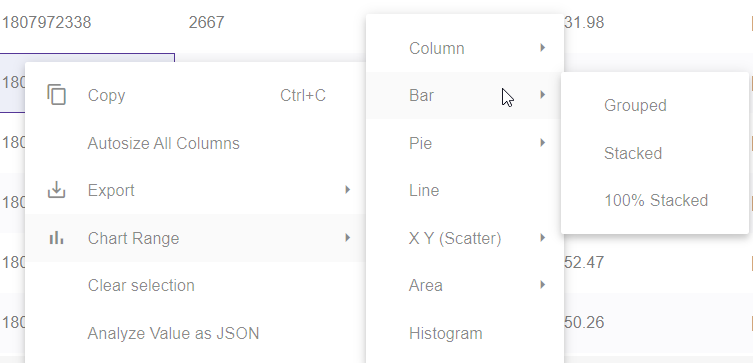
You might choose a variety of chart types as displayed in the screenshot above.
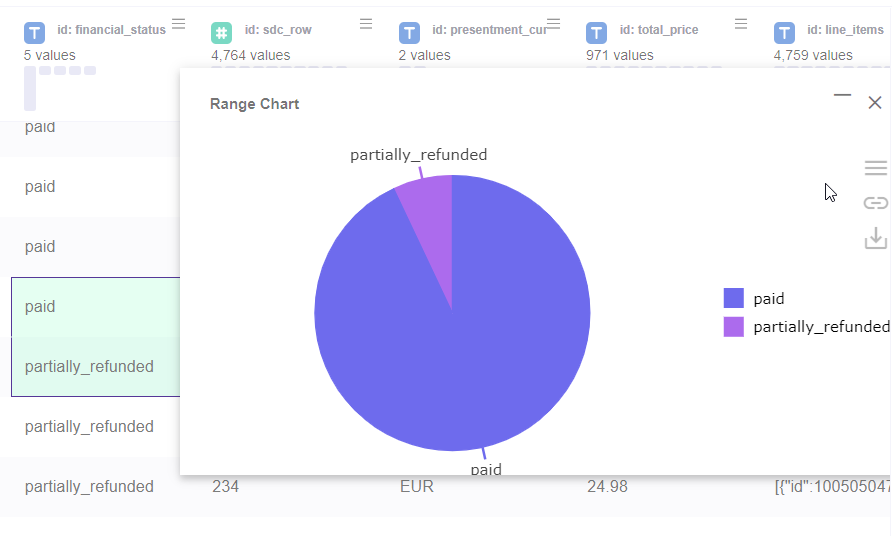
When you hover to the chart, the following actions are possible:
Menu → offers other chart possibilities for your selected area
Link/Unlink Grid → Shows the selected data this chart uses.
Download Chart → Downloads the chart as an image (PNG)
Zoom in/Zoom out → The horizontal line near the close button when clicked zooms in and zooms out the chart
Close→ Closes the Chart
- Clear selection → Clears the selection of the data previously made
- Analyse value as JSON→ Outputs the data of the JSON in a formatted form:
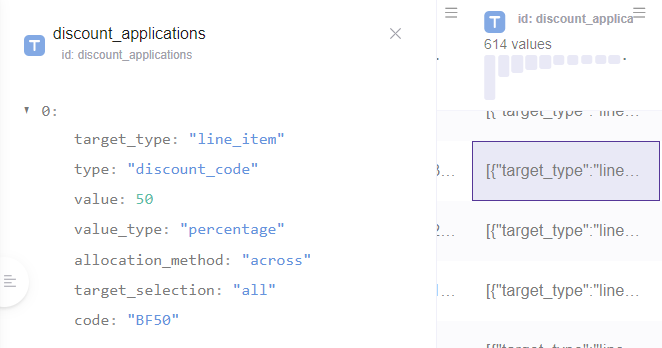
7- Columns.
By clicking the columns we have the possibility to group the data by column. You can also remove the columns you do not need, this way your data are cleaner for your analysis.
After you click the column button all the columns will display in a menu bar in the right. if you want to group by the data simply drag the column you want into Row Groups (do so by clicking the two horizontal lines near the column name).
If you want to remove Values you can do so by clicking the X sign.
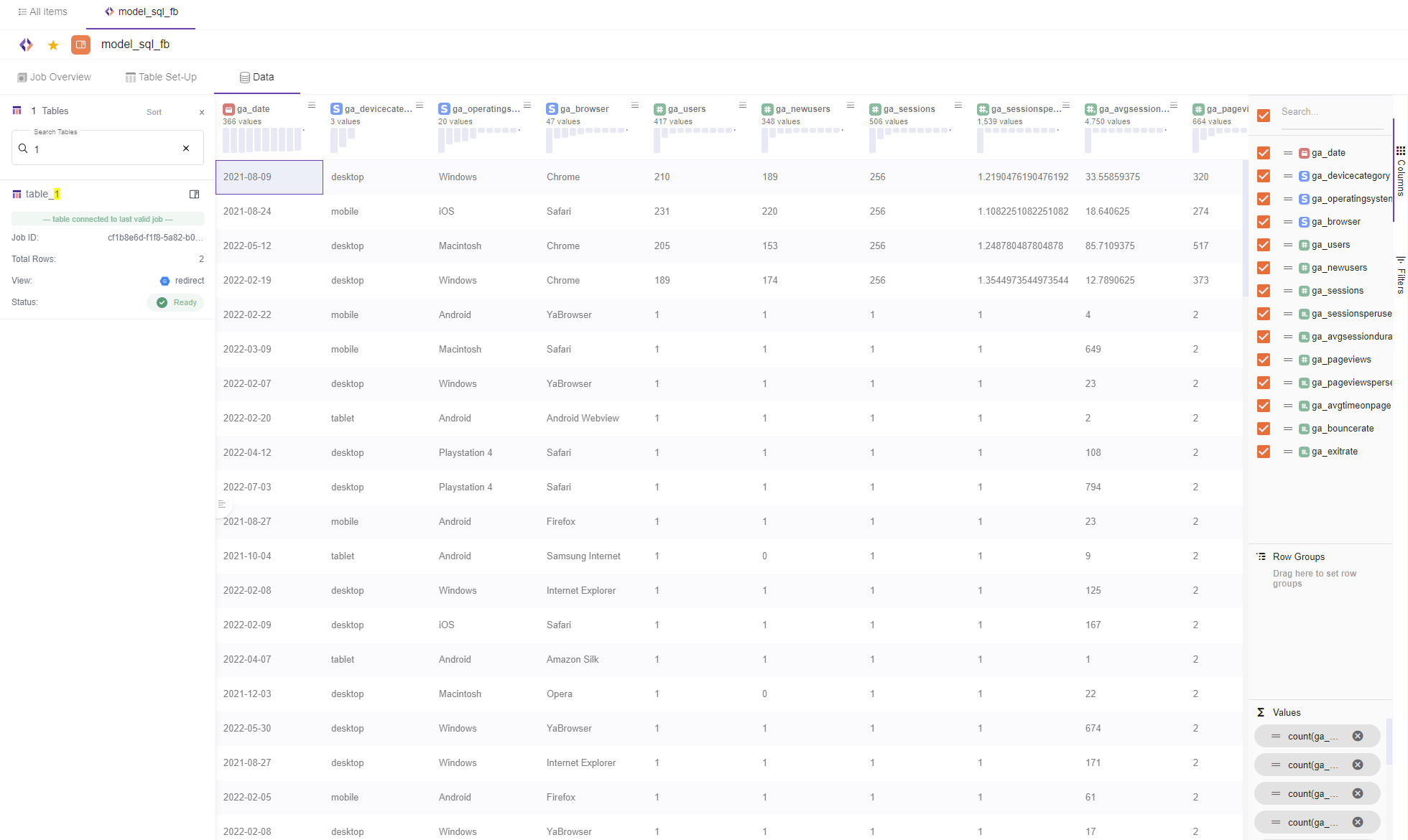
8- Filters.
When clicking filters button all the columns will display in a menu bar in the right. You might want to filter the column data, without needing to scroll horizontally (when you have too many columns) to find the column you need to filter out. That is when the vertical column listing comes in rescue.
Simply click on the column you need to add a filtering criteria and add the condition.
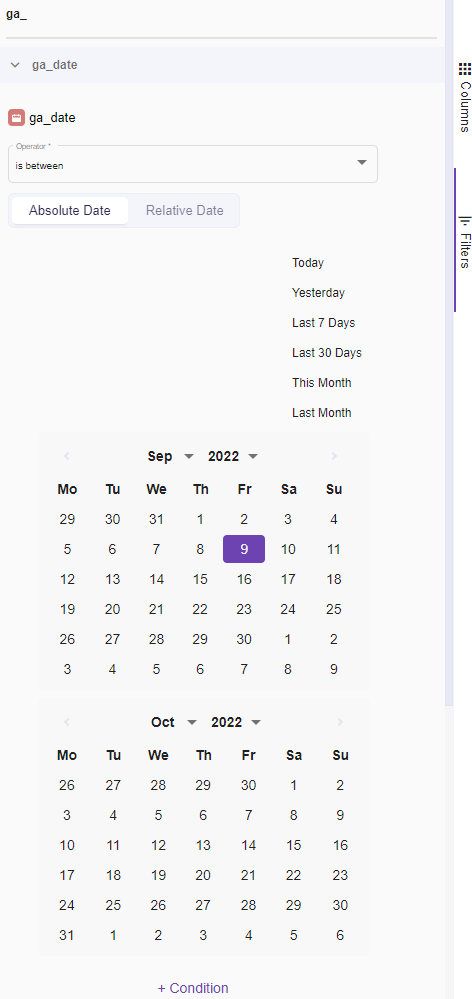
9- General statistical data.
This area pr in the bottom of the table, provides information on:
- Preview Rows/ Total Rows
- Number of Columns
- Selected cells → displays the total number of the selected cell you have made
- Size